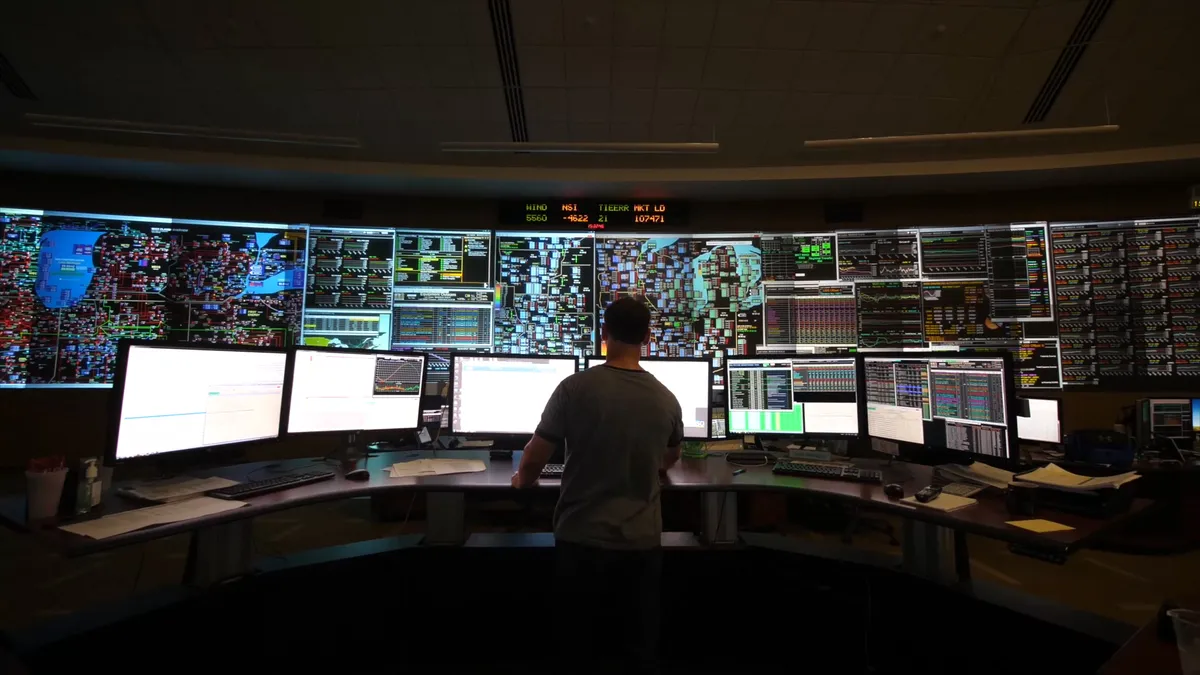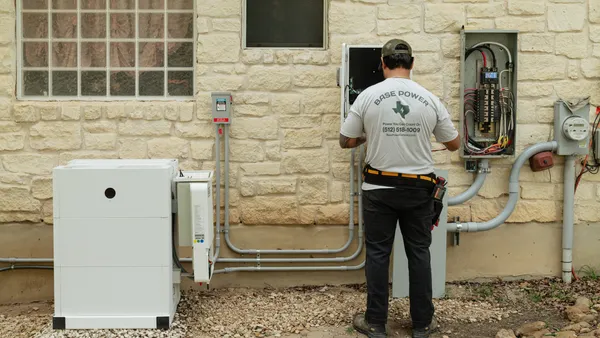Dive Brief:
- Rep. Debbie Dingell, D-Mich., introduced on Thursday a House version of a Senate bill to establish a National Climate Bank, which the federal government would capitalize with $35 billion over six years.
- The bank is meant to mobilize up to $1 trillion in private investment over a decade, enabling the creation of more green banks in the country and supporting efforts of existing state and local green banks. Dingell's state green bank, Michigan Saves, has been around for nearly a decade and needs additional funding to support energy efficiency and clean energy programs, its president and CEO, Mary Templeton, told Utility Dive.
- The bill matches a Senate version introduced this summer by a group of Democratic senators. Stakeholders see the bill as an opportunity to consider the policy in broader climate solutions discussions in hopes of getting enough traction for passage in 2021.
Dive Insight:
Green banks in the U.S. have driven a lot of investments in solar power and energy efficiency, according to Jeff Schub, executive director of the Coalition for Green Capital. "By definition, almost all of the activity that's being financed is done in a way that lowers energy costs with end users," which has garnered the bill bipartisan support in the past.
Schub said the bill has enough support to pass the House today. However, stakeholders including Coalition for Green Capital are hoping to see Congress pass this bill in 2021, as that is "a realistic reflection of the amount of time and effort it takes to create something like this," he told Utility Dive.
"A number of [Democratic] preside?ntial candidates have put green banks or climate banks ... into their campaign plans," he said, which could potentially increase the likelihood of a climate solutions package in 2021. However, he said the bill represents a fiscal policy that could get support from Republican administrations as well.
The House Energy and Commerce Committee is putting together a comprehensive climate bill, which Chairman Frank Pallone, D-N.J., announced earlier this year.
"We know for near certain that [the National Climate Bank Act] is going to be included in that package," Schub said.
The bill is also central to other conversations with Congressional staff and the House Climate Crisis Committee, according to him.
Having other committees consider this bill puts the concept of national green banks "into the bloodstream… increasing its chances of being seen as part of the established set of [climate] solutions," Schub said.
Supporting state-level green banks
The U.S. has 12 green banks at the state, county and city levels, supporting the emergence of new markets. However, they're limited in funds, and vulnerable to political backlash.
"We would see a national climate bank supporting our work by helping us to expand and fill additional gaps," Templeton said, referring to projects that don’t have a large pay-off to be supported by the market, such as large-scale renewables.
For Michigan Saves, that means supporting loan programs in low-to-moderate income communities, and providing longer term, low-interest rate programs for small commercial businesses to invest in energy efficiency and clean energy. Other funding opportunities within market gaps include community solar projects, solar power purchase agreements for nonprofits and affordable multi-family housing, Templeton said.
"Most state and local green banks" have focused on residential, small-commercial or community solar, and building efficiency upgrades, Schub said. These banks lack the capital to finance a utility-scale wind project, but "it so happens to be the case that those [solar and energy efficiency] products tend to be the ones that are underserved by private capital markets."
"To support the work that we do ... we need additional funding," Templeton said.
Michigan Saves says it has enabled more than $200 million in public and private investment in the past decade, with an "extremely strong" leverage ratio between private and public funds. "For every single public dollar that we receive," there's around $30 of private investment the bank makes by working with private lenders, she said.
"The sooner that we can have support at the national level like that, the sooner that other states can get started," Templeton added.
Without a national bank commitment, green banks are limited from financing available innovations in emerging clean energy markets, like transportation electrification, Schub said. Local green banks could help finance charging infrastructure buildout and EV leasing in underserved communities, as well as battery swap structures and other "necessary" financial innovations on the transportation side, he said.













